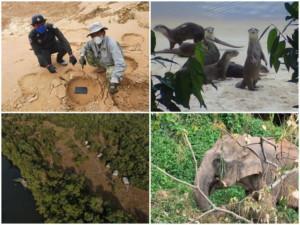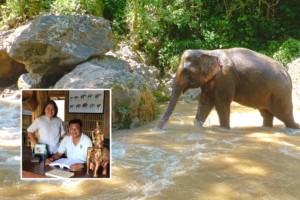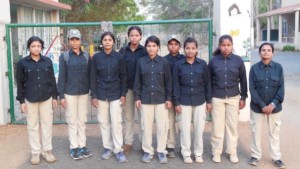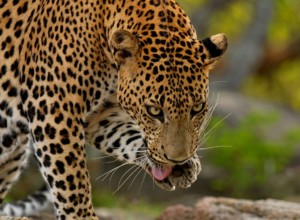Could a primate be driven to extinction by “ecotourism”?
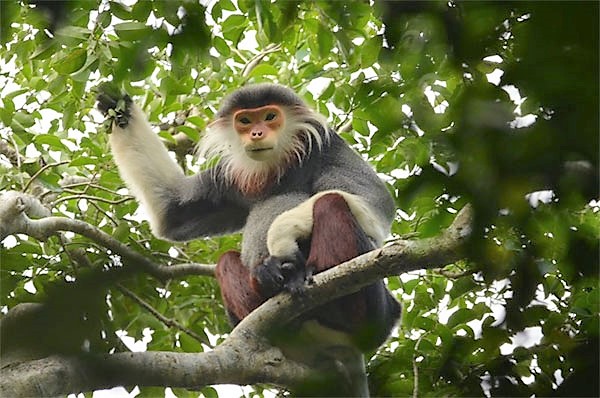
Some 237 herds of red-shanked douc langurs (Pygathrix nemaeus), comprising more than 1,300 individuals, are living in the Sơn Trà Nature Reserve in Đà Nẵng, Vietnam, reports VNS.
The Da Nang Union of Science & Engineering Associations and the Biodiversity Conservation Centre of GreenViet, an NGO, made the announcement at a conference on langur research this week.
The research took a year to complete and was based on daily field trips to the 4,300ha reserve, 10km from the city centre.
Head of the research team, Bùi Văn Tuấn, said the findings shed light on the existence of the endangered langurs and current protection provided by the reserve.
“We once again confirmed that the Sơn Trà Nature Reserve is unique in Việt Nam – a home to the largest population of red-shanked douc langurs,” Tuấn said at the conference.
He said the Sơn Trà Nature Reserve was an ideal area for the langurs – a species found only in Laos and Việt Nam.
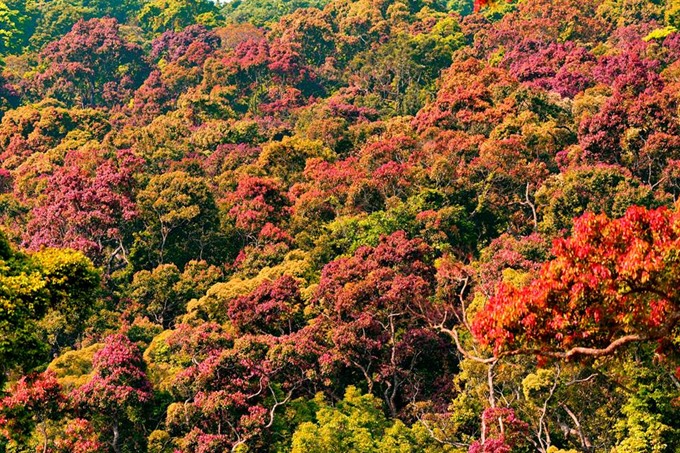
Sơn Trà forest in Spring. Source: GreenViet
A large percentage of the endangered langurs live in northern parts of Sơn Trà peninsula, on an area of 3,100ha, he said, warning that human activities including mass tourism, construction, illegal hunting and logging would result in a decline of the langurs and damage Sơn Trà in the future.
The Vietnam National Administration of Tourism (VNAT) has designated Sơn Trà Mountain a national tourism site that will host the “luxury eco-tour resort complex” and 4.6 million tourists by 2030.
The tourism development plan, which was announced in March, includes 1,600 luxury hotel rooms to accommodate 300,000 tourists, with expected revenues of VNĐ 4.3 trillion (US$ 190.3 million).
The Sơn Trà Peninsula, which covers an area of 4,439ha, will have 1,056ha earmarked for development as a “national eco-tourism and luxury resort” in central Việt Nam.
Amusingly — as if the threat of extinction for the langur wasn’t enough to dissuade development — VNS reported that biologists at the conference warned that monkeys living in the reserve could break into resorts and cause trouble for tourists and management!
Dangers for the endangered
Trần Hữu Vỹ, director of GreenViet, said the langurs in Sơn Trà Nature Reserve were declared endangered by the International Union for the Conservation of Nature (IUCN) in 2013, but the species had recently been classed “Critically Endangered” or nearly extinct.
This IUCN Red List entry for Pygathrix nemaeus indicates “Endangered”.
Vỹ said GreenViet has spent 10 years researching biodiversity in the reserve and the protection of the langurs. He claimed that development of hotel and resort projects in the reserve would damage the area’s rich biodiversity from the mountains to the coast.
The nature reserve has already shrunk from over 4,300ha to 2,500ha to make room for the development of dozens of resorts and hotel projects, and over 20 streams in the reserve have dried up – the worst conditions in 20 years, Vỹ said.
Vỹ said land earmarked for tourism development in the reserve would claim more langur habitat as well as damage ecological systems on land, as well as the seaweed and coral reefs of the coast of Sơn Trà.
Other more random human activities have badly affected the lives of the primates and wildlife in the reserve: For example, six monkeys have been killed by motorcyclists over the last two years; two cases of illegal hunting were exposed in which two langurs were killed for money; around 10 hectares of forest has been illegally logged for buildings in three cases between 2014 and 2016; and thousands of traps and tonnes of rubbish have been collected by local rangers and volunteers since 2015.
Symbol of biodiversity
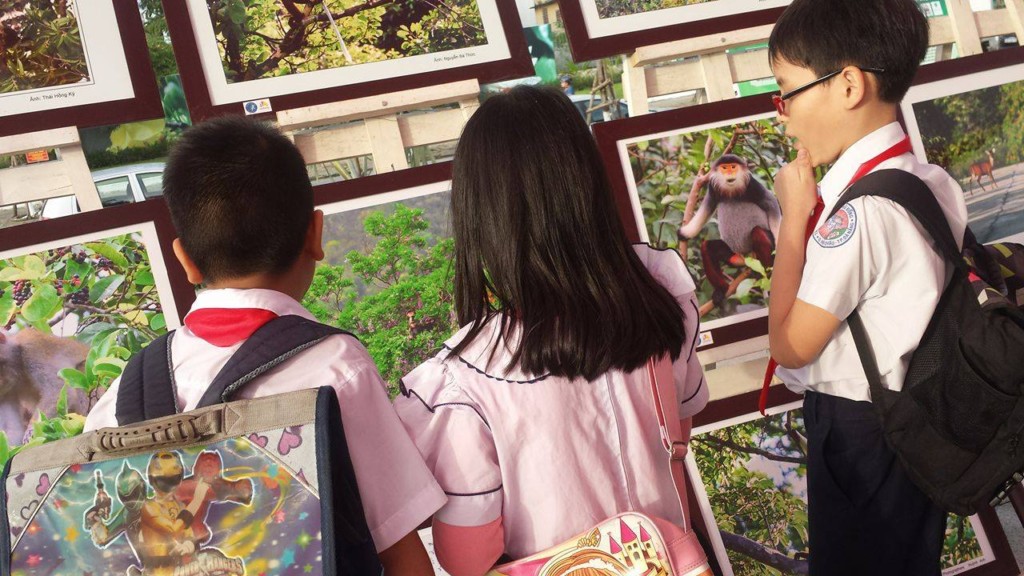
Children are fascinated by wildlife. A January 2017 exhibition of the red-shanked douc langur was organised by Da Nang Han River Photo Club in cooperation with GreenViet. Source: GreenViet
In preparation for hosting this year’s Asia Pacific Economic Co-operation Summit (APEC) Leaders’ Week, November 6 – 11, Da Nang has selected the red-shanked douc langur as its symbol of biodiversity.
Last month, Huỳnh Tấn Vinh, Chairman of Da Nang’s tourism association, sent a petition to Prime Minister Nguyễn Xuân Phúc, asking for changes to the Sơn Trà Master Plan.
In response, the Government asked the city to provide a scientific assessment of environmental impact and biodiversity in a detailed report to be sent to the PM before May 30.
Related posts


